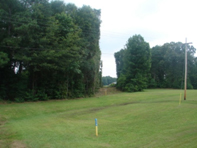 Vegetation Management is important in maintaining the pipeline industry infrastructure as well. Gas, chemical and oil pipelines snake through every region of the country, often unseen except for marker posts indicating a pipeline right-of-way (ROW). The pipeline right-of-way is strip of land usually about 25 to 150 feet wide containing the pipeline.
Vegetation Management is important in maintaining the pipeline industry infrastructure as well. Gas, chemical and oil pipelines snake through every region of the country, often unseen except for marker posts indicating a pipeline right-of-way (ROW). The pipeline right-of-way is strip of land usually about 25 to 150 feet wide containing the pipeline.
Did you know that natural gas supplies almost one fourth of all the energy in the United States? For this reason, keeping natural gas pipelines in proper working order is essential to fueling the lives of Americans all over the country. Over time, these pipelines become overgrown with vegetation which can lead to both structural problems as well as maintenance trouble for workers. Learn how and why right of way (ROW) clearance is essential for keeping natural gas pipelines safe.
Pipeline right-of-ways are often recognizable as corridors that are clear of trees, buildings or other structures except for the pipeline markers. Sometimes ROWs may not have markers clearly present and may only be indicated by cleared corridors of land.
Keeping right-of-ways clear is essential to assure the safe operation of electrical lines and pipelines, as well as to enable the proper access to the ROW for maintenance, inspections and upgrades.
Keeping Pipelines Safe
Just like your car needs regular checkups, pipelines also require regular inspections to ensure they are in working order. Even though these natural gas pipelines run underground, they are accessed from above the surface for maintenance. Vegetation will overgrow and obscure the path of workers trying to access the pipeline, making inspections and routine maintenance nearly impossible if not treated regularly. Having an ROW plan in place ensures that workers can get to the pipeline when they need it and keep operations safe. Right of way clearance programs not only make life easier for workers, they also ensure utility companies stay in compliance.
Staying in Regulation
The
Department of Transportation in each state has strict regulations requiring utility companies to continually keep rights of way free of vegetation as well as a number of other factors that could affect the safe operation of the pipeline itself. Failure to comply not only raises safety concerns but can also lead to costly fines.
Types of Vegetation
The types of vegetation which commonly affect natural gas pipelines are larger and heartier in composition. Trees, large shrubs, and stemmed woody plants are all examples. Besides causing complication above ground, the roots of these plants can also cause damage to the underground parts of the pipeline. Commonly, brush is pulled out by the root. Trees are managed by cutting the trunk as low to the ground as possible and treating the stump with an EPA-registered herbicide to prevent regrowth.
For utility companies, the most effective means for controlling plant growth around natural pipelines is to partner with a knowledgeable right of way clearance company. Townsend’s daughter company,
Row-Care LLC is experienced in providing tailored right of way clearance programs to ensure the safety and accessibility of your utility company’s natural gas pipelines.
For six decades, Townsend Tree has provided quality right of way clearance and vegetation management services to utility companies across 30 states. Let us work with you to find the perfect services for your business.